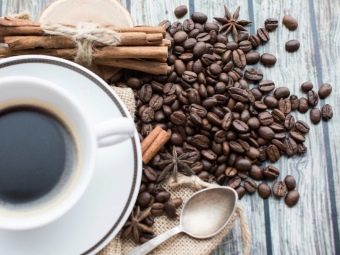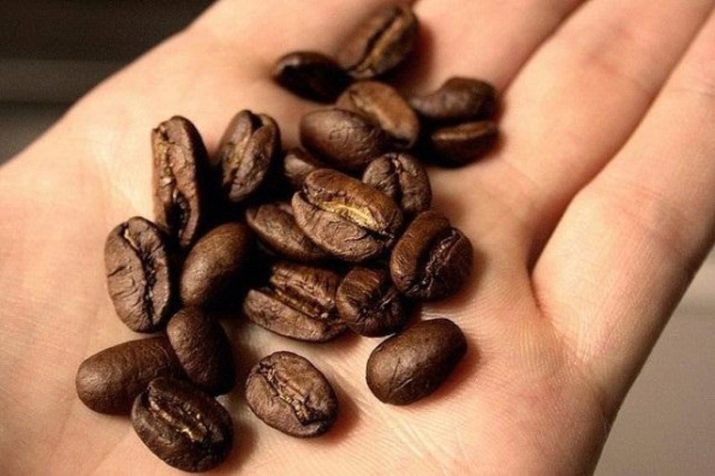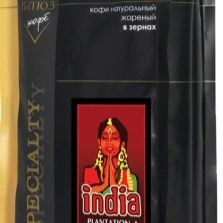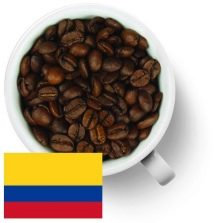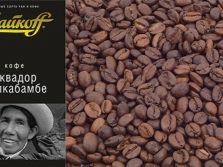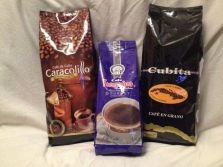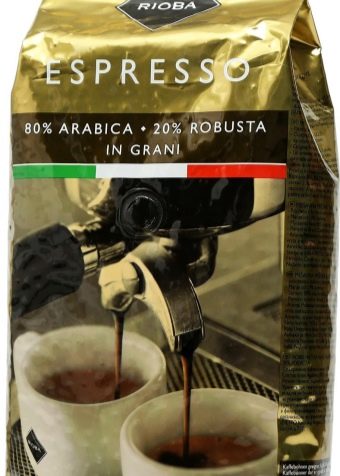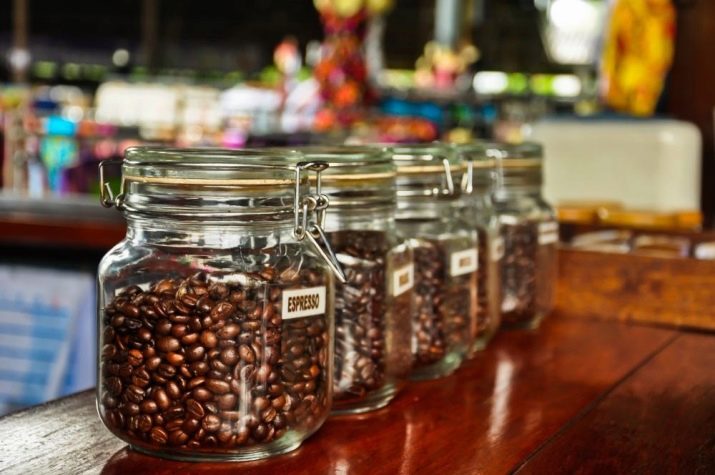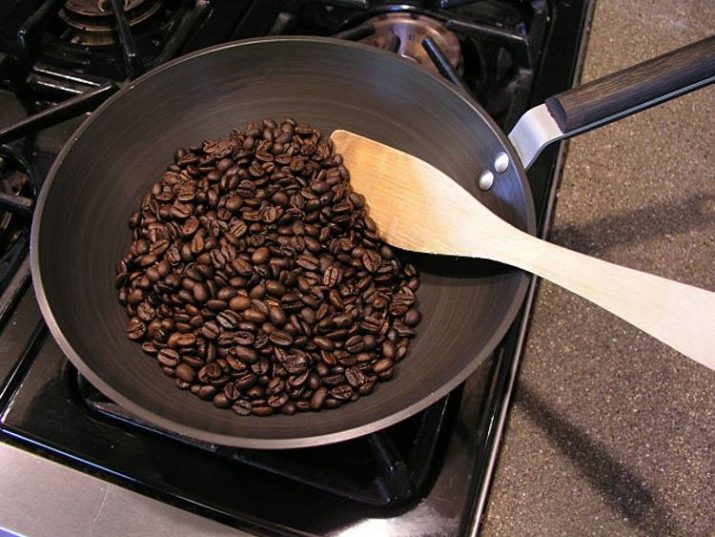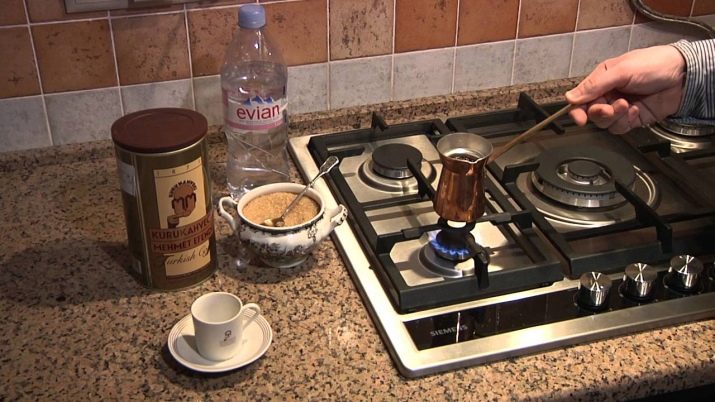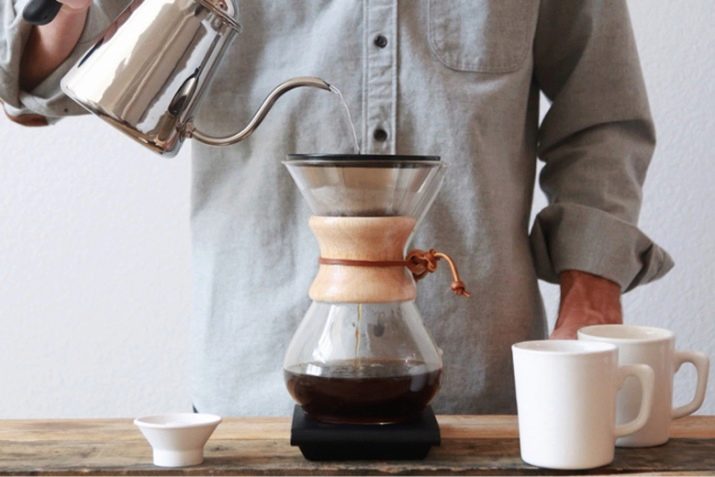Coffee Bean Selection Rules
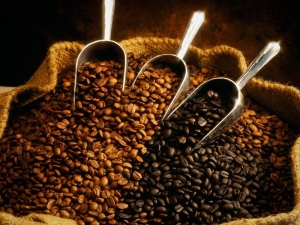
Coffee ... How much of this word. The whole world won this invigorating drink with an incredible aroma.Coffee is a whole art that you never get tired of learning. Many subtleties and secrets lurking in the process of its preparation, about which every coffee lover needs to know. In order for a freshly brewed beverage to fully meet your expectations, you need to know about the rules for choosing these beans.
Features and composition
Coffee beans has a unique and complex composition, which includes 1200 components. The composition of this product continues to be studied, as well as the effect of these components on the human body. An interesting fact is the appearance in coffee beans of some components during heat treatment.
Most of the constituent elements are aromatic substances and volatile compounds. That is why grain coffee has such a strong and unique aroma. These volatile compounds largely determine the taste characteristics.
The main component that makes up the coffee bean is caffeine. It is he who gives vigor and energy.
Different varieties contain different amounts of this component. The more caffeine, the more expensive coffee. Also, the caffeine content depends on the degree of ripening of the grain and the duration of its roasting.
Also in the grains contain vitamins of group B, which are necessary for our body for normal functioning. There are other vitamins in the composition of coffee beans: A, D, and E. In addition, acids, amino acids and proteins that are important for humans are present in the grain.
If the coffee does not have any additives, including sugar, the number of calories is minimal. Such a product is quickly and easily absorbed by the body. Despite this pleasant feature, you can not drink more than two cups of this drink per day, because it contains a large amount of caffeine, which in large quantities can harm the body.
Benefit and harm
Everyone will be interested to know how useful coffee beans are and what is its harm for our body. Let's start with useful qualities.
- The presence in the composition of a huge number of useful components, many of which are necessary for the normal functioning of our body.
- Increased attention and memory stimulation.
- Improving mood, due to what freshly brewed coffee is recommended in the initial stages of depression.
- Strengthening of action of some medicines, for example, aspirin and acetylsalicylic acid. This effect of caffeine primarily applies to pain medication.
- Reducing the likelihood of developing Alzheimer's disease and Parkinson's disease. This is due to the influence of caffeine on the neurons of the brain and the presence of a vasoconstrictor effect. The brain and the vascular system receive a kind of training that hardens them.
- Reducing the likelihood of constipation and getting rid of an already developed problem.
- Prevention of the formation of pathologies that affect the liver.
- Prevention of breast cancer.
Harmful effects are as follows.
- The development of coffee or caffeine addictionwhich is comparable to nicotine or alcohol. Dependence manifests itself in reducing the effect of caffeine. The body not only requires constant use of coffee, but also an increase in its quantity.
- The diuretic effect of short action. If you drink a lot of coffee, you can become dehydrated, which will be accompanied by leaching of useful trace elements from the body. After a cup of refreshing drink, it is recommended to drink a glass of water.
- Increased pressure is especially dangerous for hypertensive patients. From one cup, blood pressure can increase by 15 units. If a person has cardiac pathologies and problems of the vascular system, then this indicator may be greater. But for hypotonia, a cup of coffee can bring blood pressure back to normal.
- Regular drinking of unfiltered coffee can raise blood cholesterol which is a dangerous situation.With this condition, the likelihood of developing a stroke or heart attack increases significantly.
- Decreased bone density it is characteristic for people of advanced age who use coffee in large quantities.
- High risk of development urolithiasis.
- Coffee is contraindicated in pregnant women.because it can adversely affect the fetus (anemia of the placenta, miscarriage, low weight gain).
- Stimulation of the heart and increased stress - indirect effect that a drink has on an organ. If caffeine goes to the body a lot, the effect on the heart will be disastrous.
If the norm is observed, the situation will not go beyond the safe border.
Appearance
High-quality coffee beans must meet a number of requirements that apply to its appearance.
Natural coffee fat should be placed on the surface of the beans. This feature makes the grain look like wet. The presence of this fat indicates the high quality and freshness of the product. Arabica beans have a larger size than robusta. Another distinctive feature is the S-shaped groove in the center of the grain, which is characteristic only for Arabica.
Grains in a blend should be whole, have the correct form. The presence of halves and crushed elements in quality coffee is unacceptable. Such small particles are quickly roasted and charred until the whole grain reaches the desired degree of roasting. This coffee will be very bitter and have an unpleasant taste.
The color is uniform and the same not only in the area of a single grain, but in general in all the beans. The presence of lighter beans among the dark says about the early collection of coffee, which did not have time to ripen. To the touch quality grain has a velvety structure.
Roast Level
The level of roast for coffee is of great importance. This characteristic determines the taste of the future drink, its aroma and color. The unroasted coffee beans are green in color. During heat treatment, the color, taste, aroma and other characteristics change.
There are 10 degrees of roast coffee. This information is necessarily indicated on the label by the manufacturer. Next, we find out which coffee degree of roasting is more consistent with different taste preferences.
Light degree of roasting is obtained as a result of a brief heat treatment. For such a roast is characterized by several varieties.
- Scandinavian implies languishing beans in low temperature conditions. Grain increases slightly, but does not open. With such processing, the grains acquire a delicate aroma, in which there are notes of smell coming from fresh bread.
- American roasting gives the grain a light brown tint and inexpressive taste.
- City degree roasting makes green beans dark brown and adds spicy sourness to taste.
- Universal roasting or medium is the best option for most coffees. Different degrees are also present here:
- Full city suggests the presence of a second cotton, the release of oily droplets on the surface of the grains. The drink in this case turns out to be incredibly fragrant and slightly viscous.
- French degree also called velvet and Viennese. Roasting occurs until the grains become rich brown in color. In the process of heat treatment of smoke appears over the coffee, which comes from burning oils contained in the grains. The finished drink turns out bitter, strong, with a rich taste and strong aroma.
- Dark roast also called mexican, spanish and cuban. These grains contain a very small percentage of water. From such coffee blends are created and new tastes open.
- Italian Roast implies intensive heat treatment and air treatment. The beans are then left in the open air, which allows carbon dioxide to freely escape from the grains.This product requires special packaging (paper, foil bag), which does not allow coffee to oxidize and lose its flavor characteristics. This roast is perfect for espresso.
Producing country
On the characteristics of coffee is greatly influenced by the conditions of its growth. Because you need to pay attention to the country in which the beans were grown.
Brazilian coffee is in first place in the world ranking. This country grows the most beans. The taste of the drink made from such grains will be simple, without additives and extra notes. This is what distinguishes Brazilian coffee and makes it valuable among gourmets. Coffee from Guatemala has shades of spices in its taste, which makes it special.
Ethiopia is also actively growing coffee and supplying it to the world market. In such grains there is sourness, a shade of cinnamon and taste of wild berries. The taste of the finished drink is interesting, soft and special, as evidenced by numerous reviews.
The best coffee in Africa grows in Kenya. Cultivation of coffee is controlled by the state, which guarantees its high quality. For Kenyan beans is characterized by mild acidity and hints of black currant, which makes the finished drink flavored and noble.
Coffee from Colombia is characterized by lightness and fruity notes that are well felt in the finished drink. The Indian product is distinguished by a special aroma, in which there is a strength and expressiveness.
Beans from Yemen are characterized by a pronounced fruit flavor, which not all gourmets like. But there are a large number of users who choose this coffee due to this peculiar taste.
Although Cuban coffee is not as popular as Colombian and Brazilian coffee, its excellent taste is appreciated by many lovers and gourmets.
Mexico grows exclusively Arabica. Grains differ in the big size and soft taste. Of them it turns out not very strong drink, which has a large number of admirers among fans of weak coffee.
Ecuador is engaged in growing three types of coffee: Arabica, Robusta and Liberica. The product is high quality, although a few decades ago, coffee from Ecuador could not be counted even among the middle class. Most of the crop remains in the country, only 20% is exported.
Sorta
Taste characteristics and a number of biochemical properties of the product depend on the variety and blend. Not brands and marketing legends, which are located on the packaging, namely, varieties and the ratio of grains matters. The world knows about 90 varieties, but only two of them are produced in industrial quantities.
Arabica is the most expensive and common variety. Plantations of such coffee occupy up to 90% of all plantations. About the same it is contained in many blends. In the first place comes the aroma and taste, not the strength and caffeine content. Arabica is the best coffee grown on plantations around the world.
Robusta is not as common as Arabica. It is more accessible, but not so fragrant, but very strong. His taste is simple, even a little rough. It is the grains of Robusta that add bitterness and strength to the blend.
Liberica is the most affordable variety, which cannot be classified as a cultural or healthy coffee. Manufacturers of such coffee are engaged in growing up, who are trying to make their product cheaper in any way. Despite all these negative qualities, Liberica has a strong aroma. Such grains may be added to the blend in small quantities to improve the flavor.
Green coffee is a novelty that is very popular. The user is tempted by the ability of such a product to lead to rapid weight loss, to give vigor and increase efficiency. In our opinion, this is a well thought out marketing plan, but no more.
On sale it is difficult to find pure coffee, without additives. Manufacturers create blends from Arabica and Robusta, varying the percentage of each grade.
100% Arabica is the most elite variety, it is also the most expensive and rare. A freshly brewed drink of this sort will have a deep velvety taste, in which light sourness will be traced.
Many manufacturers practice blending Arabica beans that grow in different countries. Only a true gourmet and a true professional will be able to catch this moment. For the average lover, the taste will not be different.
- Arabica 90%, Robusta 10% - This is the most common blend of coffee, in which the strength and taste are harmoniously combined, there is no acidity, but there is a slight bitterness. This blend is used by coffee shops for making large quantities of drinks (espresso, cappuccino, americano).
- Arabica 80%, Robusta 20% - this blend does not even have a hint of sourness, but it has a high strength and a pronounced invigorating effect. You can make lattes from such coffee, because the additional components that are included in the recipe of the drink reduce its bitterness.
- Arabica 70%, Robusta 30% - according to this recipe, inexpensive blends are created, which are popular in small catering establishments and fast food restaurants. If you plan to buy such a coffee home, then you need to carefully examine the label for the absence of Liberica.
Blend, created on the basis of Arabica, Robusta and Liberica, stands out for a low price. Oddly enough, there are many connoisseurs of just such a product. After a low cost, an important advantage is the bright and strong aroma, which appears in the blend thanks to Liberica coffee.
How to choose and store?
Coffee reacts sharply to the conditions of storage and transportation. Even initially high-quality grains can be irrevocably damaged in the process of improper transportation and storage. Because you need to know about the rules and secrets of choosing this product, and you must comply with the conditions of its storage.
Buying coffee is better by weight. In this case, you can visually assess the quality and condition of the beans.
High-quality grains have a shiny surface, it is these beans that you need to choose. They should not be dull or gray. Such features talk about the failure of the product or broken packaging. Coffee in the package, which has traces of bloating, stale.
Smell can tell a lot. It should not be traced notes of rancidity, mold and staleness. Therefore, if you are going to buy coffee, you should not use toilet water, so that the smell could not be lost by foreign smells.
Reliable manufacturers who care about the quality of their product, equip the packaging with special valves. They allow you to smell the product and provide an outlet for carbon dioxide, which is emitted in large quantities from the grains after roasting.
The integrity of the grains should not be broken. Each grain should be smooth, without chipping and cracking.
For a quality product you need to pay. Can't make good coffee at a low price. A heavily undervalued price indicates low quality grains, stale, spoiled, or a large percentage of Liberica.
Coffee, like any product, has a shelf life. At this point, when choosing grains, it is imperative to pay attention. After roasting just two weeks, the grains retain the full range of flavor and aroma characteristics. After this period, the grains begin to lose their features. Roasted grains, packed in high-quality packaging, equipped with a check valve, can be stored for a year.
The package should contain complete information about the product and the manufacturer - when and where the beans were collected, when they were cooked, the variety, the degree of roasting, and many other information. Carefully study the packaging design and brand.Famous brands often fake, changing the letters in the title.
Now let's talk about the rules for storing coffee beans. Since this product is capricious, the wrong conditions can completely spoil it and make it unsuitable for further use.
Grains should not have direct contact with air. They quickly oxidize, lose their quality and deteriorate faster.
Coffee perfectly absorbs odors, because it can not be stored next to products that have a strong smell.
For storing coffee, you must use a vacuum container that will not let the sun's rays. There are special vacuum packaging with a multilayer structure on the free market. They are best suited for storing beans.
Grains are capable of absorbing moisture, when ingested, which significantly reduces the shelf life of the product and loses its characteristics. To prevent moisture ingress, always close the lid of the container tightly and keep the coffee away from water sources.
Heat is another enemy of coffee beans, from which they must be reliably protected. To increase the life of coffee beans by 2 months, you can use the freezer, the product is pre-packaged in a package.
How to brew?
Any coffee, even the highest quality and delicious, can be spoiled if it is not properly prepared. Even at home, you can make a high-quality and tasty drink that will not yield to that prepared by professional baristas.
You must follow a number of rules and secrets by which you will brew coffee as a true professional.
- In the conditions of home coffee is often used Turk. To use for this purpose other dishes that are not intended for the preparation of an invigorating drink cannot be. Turk must be of high quality.
- During cooking, use clean water. It can be filtered or purified and necessarily low in minerals (the top 130 mg / l). Water with a low content of soluble components can absorb more components from coffee. Poor water will spoil the taste of the drink.
- Before using the grains, it is better to fry them a little in a frying pan. Such a secret will make the drink more aromatic and saturated.
- Grinding grain is determined by the method of preparation of the drink. For example, the Turks need the finest grinding, while the press needs a larger one. With fine grinding, the Turkish drink will have a thick, viscous and saturated taste. Coarse grain in the press will not lead to the splashing out of boiling water.
- Grinding of grains is carried out only before cooking. For this, it is better to buy a burnt manual coffee grinder. With its help, you can get the necessary degree of grinding.
- If you are a real fan of coffee, but the long cooking process in the Turk does not suit you, then it is better to buy a special machine. Coffee home installations are now available in a large assortment and finding the right model is easy. With them, the process of preparing a drink turns into a special ritual that brings pleasure.
- Beginners who are just beginning to master the art of making an aromatic and invigorating drink should not experiment with dosages and components. Until the classic recipe will not be brought to perfection, have patience.
Secrets have disassembled, you can go to the process of cooking. For this you can use five methods.
- With the help of the Turks, which is also called a cezve or ibrika. This method is the most ancient and consists of several stages.
- In the Turk poured a teaspoon of ground coffee with a slide and sugar.
- Pour water into a Turk and put it on fire or in sand, if a special apparatus is used.
- We are waiting for the rise of the foam. At this point, the Turk is removed from the fire.
- The foam should settle, after which the Turk returns to the fire.
- So you need to repeat four times.It is very important not to disturb the structure of the froth, this is the main rule of making coffee in the Turk.
- Kemeks - A unique and yet simple device. With it, you can prepare a drink in any conditions and any place, not just at home. Chemex will require four-layer filters, coffee and hot water with a temperature of 95 degrees. The essence of cooking is as follows.
- In clean Kemeks we place the filter in unfolded form so that on one side one layer is located, and on the other side there are three layers.
- In the center of the filter we fall asleep 31 g of coarse ground coffee and make a well.
- Heat the water to 95 ° C. This temperature can be achieved in two ways. Turn off the kettle or remove it from the heat before boiling or wait about 10 seconds after boiling.
- Pour some water on the top layer of coffee and wait about 40 seconds. After small portions pour in water, starting from the walls and heading towards the center.
- Water will slowly seep through the coffee, so you need to be patient and not hurry.
- Brewing coffee will last about 4 minutes. After this time, you can remove the filter. Kemeks need to shake gently, which will allow the drink to be saturated with oxygen.
- French press greatly facilitates the process and reduces the time it takes to spend on it. In this case, it is necessary to use coarse ground coffee.
The best option for making coffee are coffee machines. Such installations cost a lot, but the opportunity to enjoy the excellent taste and smell of freshly brewed coffee is priceless. For a real gourmet and a true admirer of this noble drink, the high cost of a coffee machine will not be a barrier. In such installations, you can use a large number of varieties of coffee.
Professional espresso - this is the ultimate dream for a coffee gourmet. When using such equipment, it is necessary to observe the exact dosage, to achieve a uniform distribution in the filter, to monitor compliance with the gap between the grid and the tablet.
How to choose coffee beans, see the video below.


